Lessons Learned from the Fall 2020 Semester
As Trinity College prepares to welcome nearly 2,000 students back to campus in February for the spring 2021 semester, the work to keep the entire community safe during the COVID-19 pandemic continues. Plans made over the summer and lessons learned from the fall inform the way forward as the college pursues its mission to provide the fullest and most equitable educational experience possible.
“Trinity had a strong plan, and our team remained flexible so we could assess and alter it to move in the best direction,” said Martha Burke O’Brien, A.P.R.N., practice director of student health services for Hartford HealthCare Medical Group and director of the Trinity College Health Center. “Planning, testing, and contact tracing were three of the college’s largest, most successful endeavors that helped make the fall semester as successful as it was.”
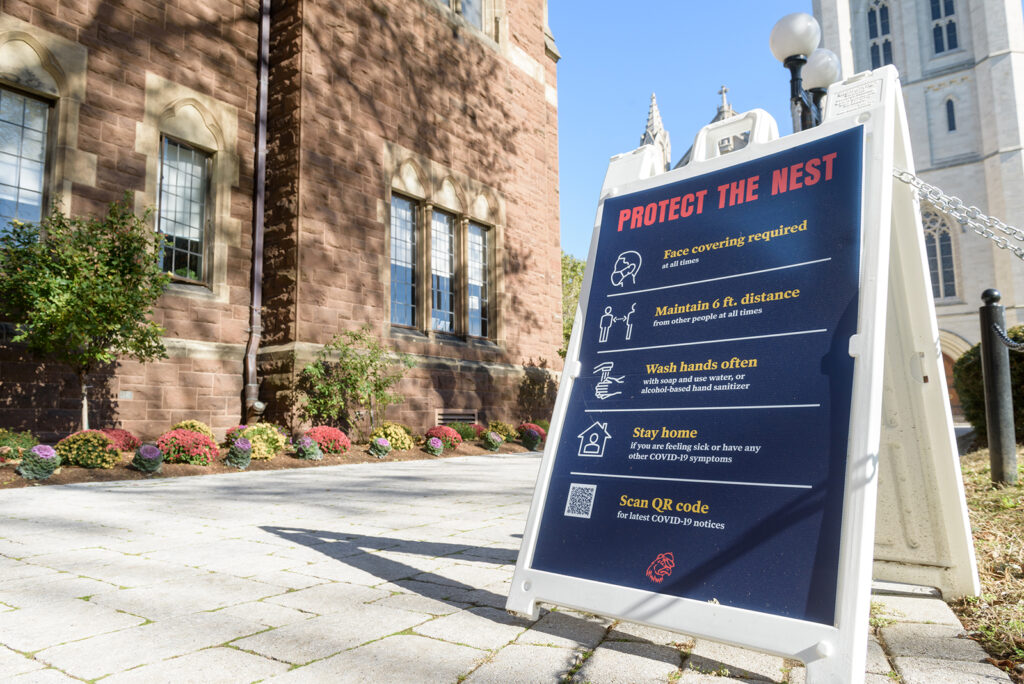
Trinity President Joanne Berger-Sweeney expressed gratitude to those on the front lines of managing the pandemic-related operations, as well as to the entire community in showing its resilience, flexibility, and care for one another. “The scale of this challenge was truly unprecedented, and so was the scope of work required to meet it,” she said. “It’s important not only to say ‘thanks,’ but also to step back and reflect on all that we did together and what we can learn from what we experienced.”
Jason Rojas, chief of staff to Berger-Sweeney and associate vice president for external relations, added, “The biggest takeaway was that we learned it was possible to have a successful academic year, predicated on people following basic guidelines that are still easily taken for granted, including wearing your mask, maintaining physical distancing, and washing your hands.” Rojas currently serves with Vice President for Student Success and Enrollment Management Joe DiChristina as co-chairs of the college’s COVID-19 steering committee. The members of the nimble group are representative of the campus and meet at least three times a week to surface concerns, discuss plans, and take their recommendations to Berger-Sweeney.
Below, members of Trinity’s COVID-19 steering committee and other campus leaders look back at the fall 2020 semester and discuss plans for spring 2021.
Managing the virus on campus:
MARTHA BURKE O’BRIEN, A.P.R.N. (practice director of student health services for Hartford HealthCare Medical Group and director of the Trinity College Health Center): The campus COVID testing center that’s run by Drew Galbraith, the athletic director, operates like a machine. Many other schools decided to do the minimum testing required by the state, which was 5 percent of their residential population, but Trinity is testing every student twice a week, in addition to our staff, faculty, and all affiliates on campus once a week. Trinity took on that financial burden to ensure the health and safety of our community. In our contact tracing program, as soon as we had a positive test, within hours we had gotten that person into isolation and found their contacts, which led to quarantining potential cases and keeping our community healthy.
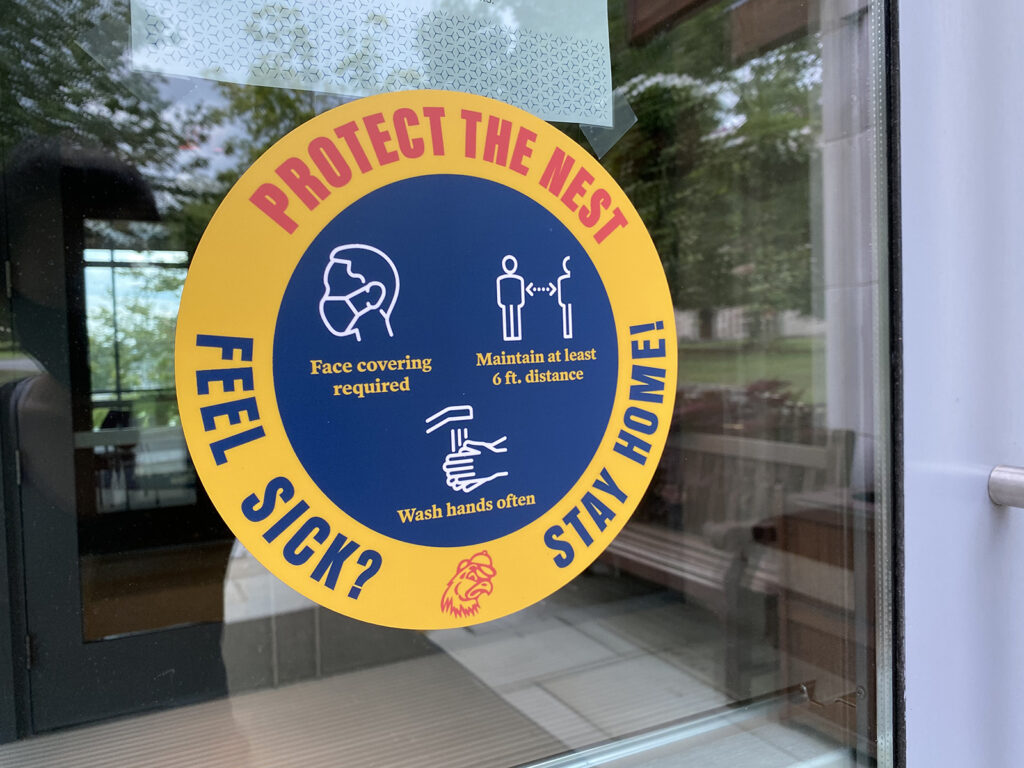
JOE DICHRISTINA (vice president for student success and enrollment management): Testing began for the fall semester on August 17 as we onboarded staff and students. We conducted close to 54,000 tests in the fall. We had 122 student cases and 16 cases among Trinity College employees and affiliates through about December 1. Student cases came in four distinct waves, each wave usually lasting about 10 to 14 days. As we caught the first few cases and contact tracing took place, we quarantined individuals identified and managed transmission on campus. A good example of this was in the wave with our highest number of cases in mid-October, with 56 students. Most cases that came in after the initial wave were among students who had been identified through contact tracing and were already in quarantine. Students were very helpful through the contact tracing process, which helped us limit the spread of the virus on campus.
JASON ROJAS (chief of staff to Trinity College President Joanne Berger-Sweeney and associate vice president for external relations): We saw no evidence of the virus being transmitted in classrooms. The transmission was mostly associated with residential groupings of students in an off-campus house or a residence hall. We could contain those before we saw community-wide spread. The staff in Student Life and the folks at the Health Center have been handling this all very well, but the work has put a tremendous amount of strain on the people involved, many of whom have been managing this since last spring. It’s a 24-hour job that goes well beyond the usual responsibilities.
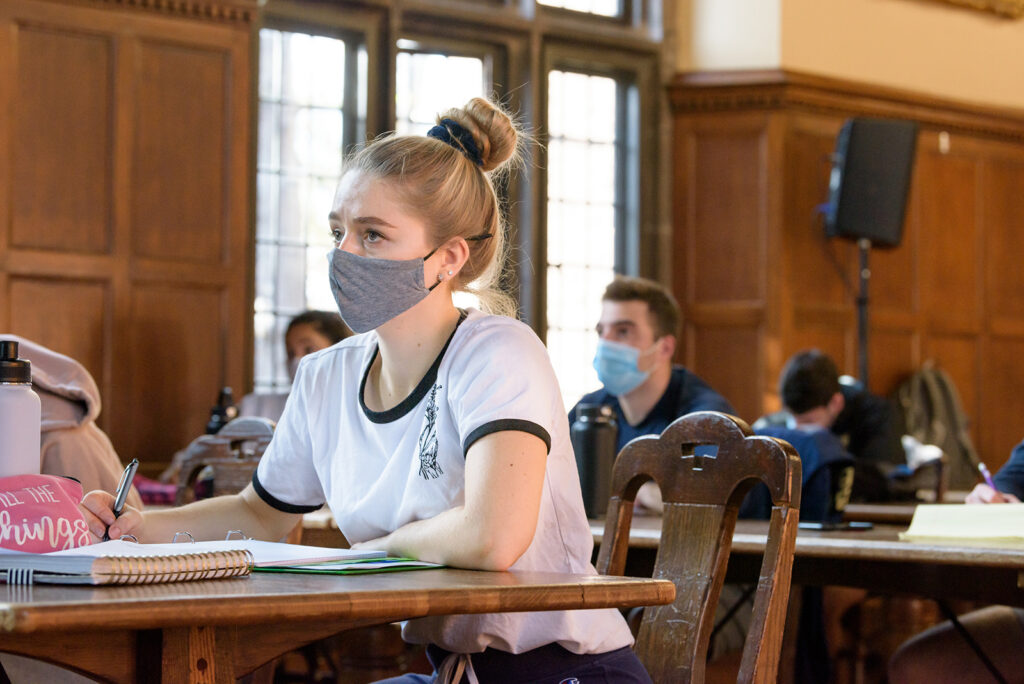
DICHRISTINA: We initially trained 8 to 10 staff members to help with contact tracing. In October, we decided to contract this out to an organization that had trained staff so that we would have folks dedicated solely to contact tracing from October through December 1. This helped us to identify potential cases sooner. In the fall, we had enough dedicated spaces on campus for students who tested positive to isolate. We are adding a few more in preparation for the spring, just to be extra prepared. There were a lot of people who cared for the students in isolation: our dining services partners at Chartwells preparing meals, Student Life staff delivering meals to the students, Health Center staff checking on the students, and our facilities partners at ABM cleaning the spaces each day. It really was a great effort by our community to care for our students.
O’BRIEN: For the people who are part of the president’s cabinet and part of the college steering committee addressing COVID, to say that a 14- to 16-hour day has been normal for the past semester is not an exaggeration.
ANGELA PAIK SCHAEFFER (vice president for communications and marketing): Initially, we developed a lot of these plans in theory because we were preparing for something that none of us had ever gone through. But we knew communications would play a big role in the community’s ability to navigate through a pandemic. We knew that consistency and clarity would be key, as well as communicating frequently. We had to determine what information people would need and want. We have received great feedback on our communications from a wide variety of sources throughout the semester, including our Communications Advisory Group and the Faculty Committee on Institutional Advancement, and from the students in Associate Professor of Psychology Elizabeth Casserly’s seminar, “Communications in 2020.”
Supporting students:
ROJAS: Last semester, we were able to have some organized, supervised athletic programming. Given the enormous loss many teams experienced by not having a season, that’s not something we can replace with practices, but this did give them time to stay in shape, do some conditioning, and have some socialization to maintain the sense of pride that’s so important to our student-athletes. In the fall, we know that 660 students participated in 435 varsity practices, 560 students participated in club sports and recreation, and 6,300 reservations were made at the fitness center and recreation spaces.
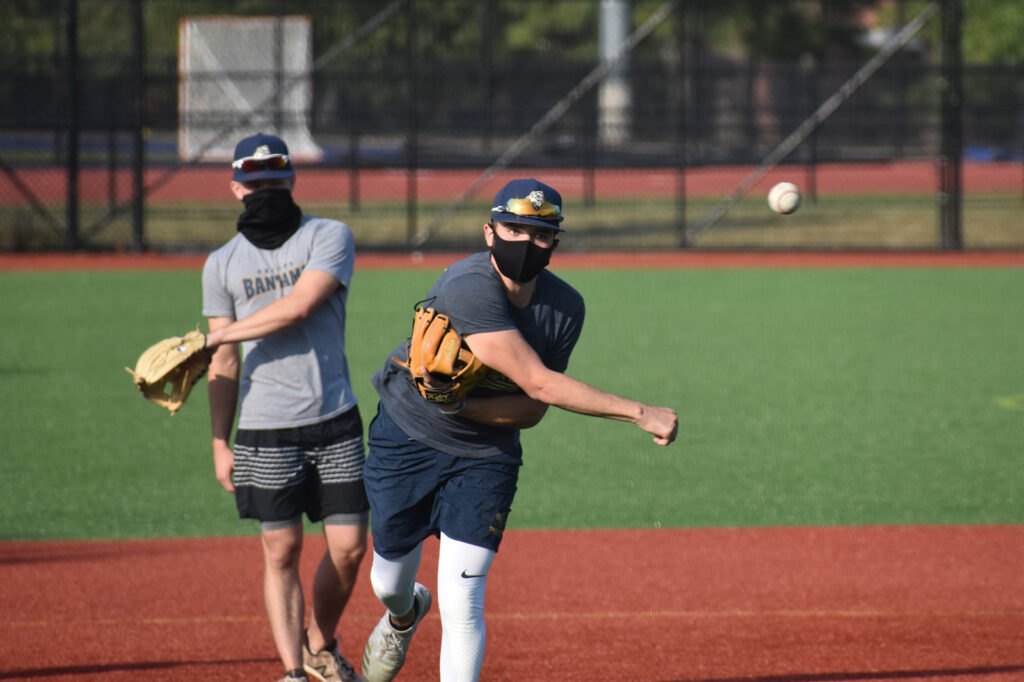
DICHRISTINA: We’ve seen no evidence of the virus being transmitted during masked, distanced, supervised rehearsals or practices. We need to continue to do that to help students not feel isolated during the pandemic, which can be very hard on them. We’re doing the best we can to give them activities that are not just online.
ROJAS: Mental health is a top concern to President Berger-Sweeney and all of us. The pandemic and what we’re doing to get through it certainly impacts the mental health of our students, and also of our faculty and staff. Some of the staff were responding to confirmed COVID cases among students at all hours of the day, any day of the week.
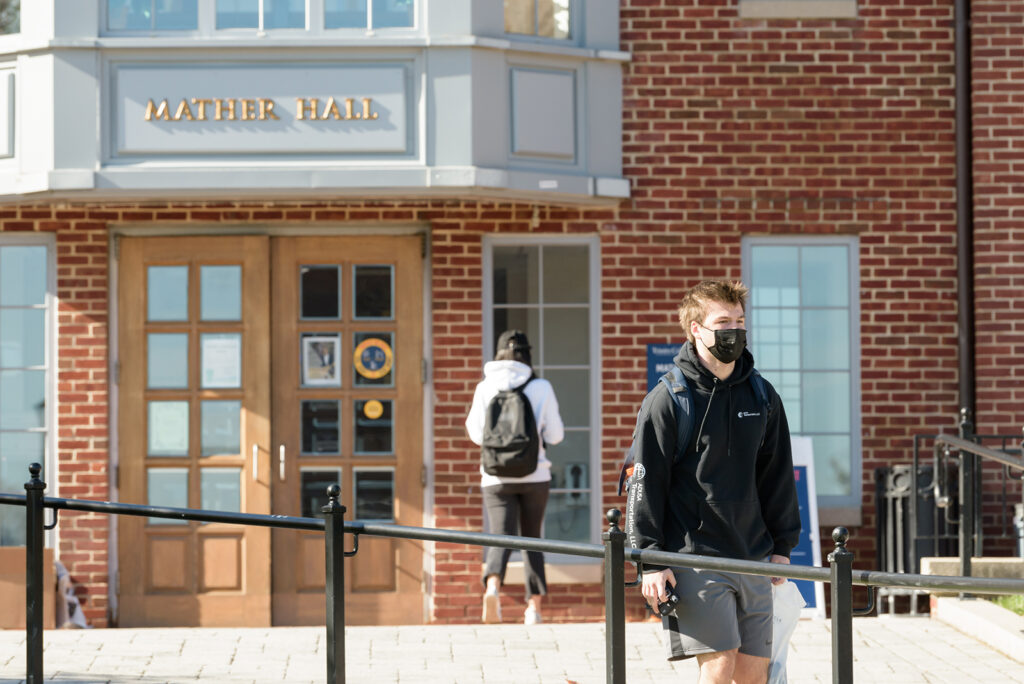
DICHRISTINA: Support for students will continue to be available from resident assistants and others in Student Life, and the Counseling and Wellness Center will be reaching out with a seminar offered to all students. We are also interested in having more tele-health options for students. The support for students extends to communications with their families. It’s very important to keep families updated, and they really appreciated that in the fall, so we’ll keep doing that. We should be proud of all that our students did in the fall to make the semester possible, and we have to continue to trust them and remind them of what it will take to bring everyone safely back to campus.
ROJAS: Students this year have had to acclimate to this “temporary normal” and first-year students have not been able to start their college experience the way they were expecting. It’s a lot to ask of them. Students have expressed a great deal of appreciation for how the fall semester went, given the circumstances, but there were some students who weren’t happy and they let us know, too. There was also positive feedback from parents who appreciated our care and concern.
The academic experience:
MITCHELL A. POLIN (associate dean for curriculum and associate professor of theater and dance): The fall semester was very different from a typical semester, but the faculty worked diligently to provide an excellent academic experience for our students. After a spring semester when we all shifted to remote learning very quickly—with little preparation—the faculty, staff, and administration committed over the summer to training and preparing new course materials for the fall. I can’t overstate how instrumental the Center for Teaching and Learning’s Design Studios were to shaping the courses as well as for faculty members to consider what it means to teach in person, remotely, or as a hybrid of both, and about the possible advantages of each format. Overall, 39 percent of courses were taught in person in the fall, 16 percent used a hybrid model, and 45 percent were taught entirely remotely. The faculty were given the additional option of teaching classes in a 10-week model or 13-week model, each of which requires a different configuration of the class and a different presentation of the course materials.
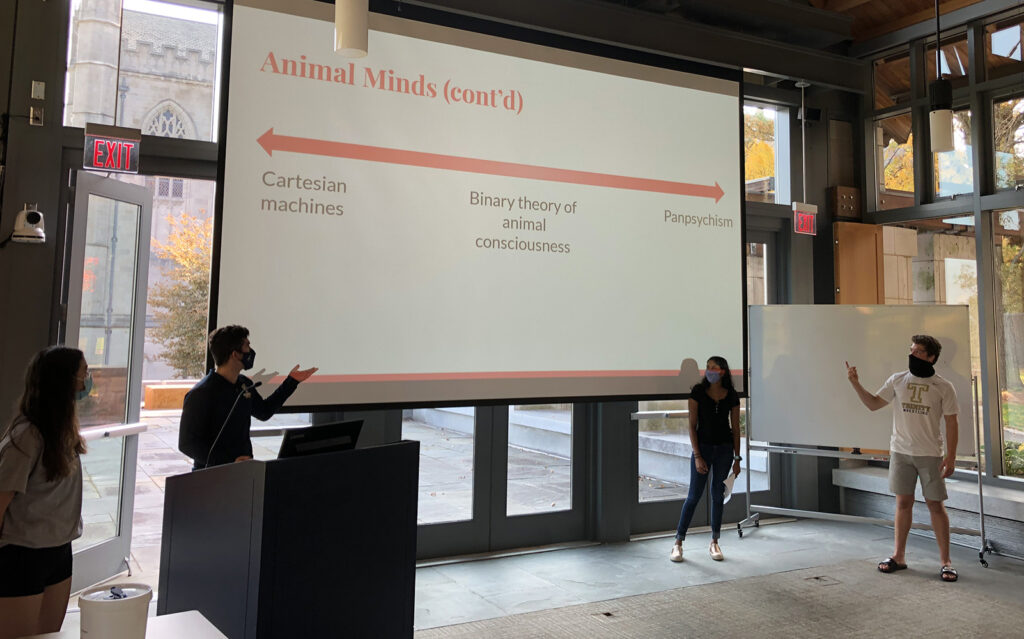
FRED KASS (assistant vice president, information services, and interim CIO): Hybrid learning is very hard to do well unless you’re doing it in a space that was designed for it. The biggest problem we had was picking up classroom audio for remote participants. We moved some class spaces around and had to wait until the January break to do improvements in others. Spring will be about fine-tuning both the remote classroom experience and the in-person classroom experience. We were inventing new processes by the week and the day in the fall; now we can make improvements by adding more microphones, changing rooms layouts, and continuing to embrace the collaborative tools that faculty and students need to get their work done.
POLIN: As a college, we learned a ton about digital technology in education and how digital technology can extend possibilities for our students. But there were challenges: not everybody has an equal Internet connection; we could not be in person as much as we’d like; and it’s more difficult for students to build personal relationships with their professors, which is so critical. The faculty put in extra work to be sure that these relationships were being maintained in whatever way was possible. One of the exciting things that happened in the fall was seeing the connections faculty could facilitate between their students and Trinity alumni remotely.
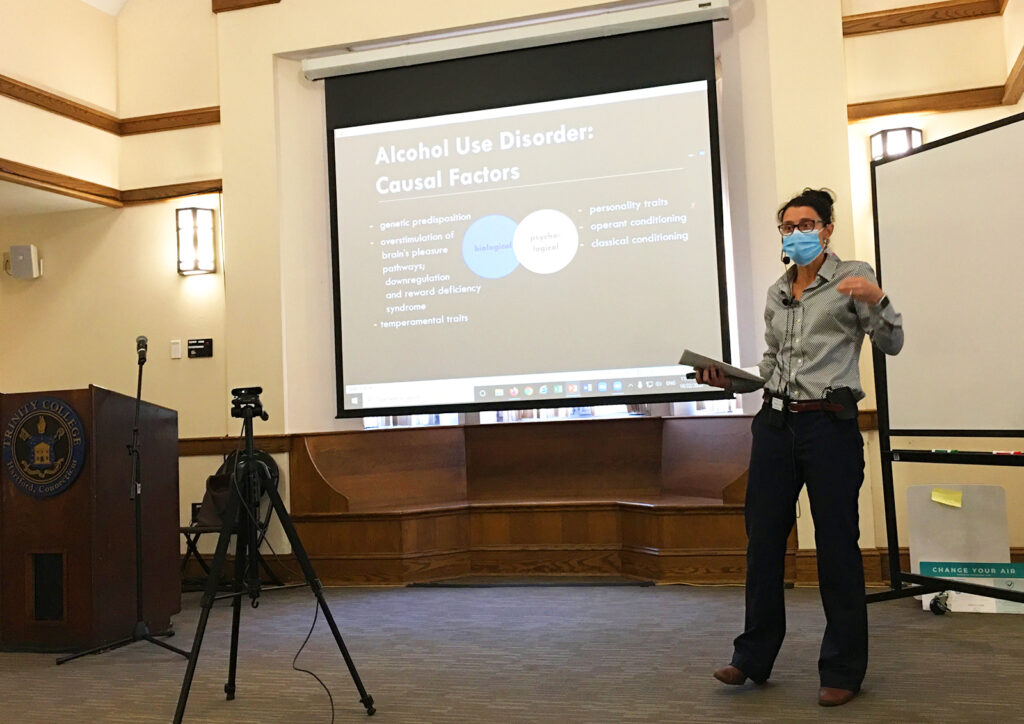
DAVID ANDRES (director, analytics and strategic initiatives): In January we launched surveys of our students and faculty to assess the academic components of the fall semester and J-Term. We invited them to share their opinions of how the semester went as well as their experiences with recent academic changes, such as remote learning and flexibility in the academic calendar. The goal is to use insights from these surveys to enhance the spring semester and, in the spirit of continuous improvement, inform longer-term planning.
POLIN: Making changes to the physical spaces in hybrid courses this spring will make remote students more a part of the class. Faculty will continue to engage in training, reflect on the experience of teaching in the fall, and determine any changes to the courses. The faculty is committed to offering the excellent and rigorous version of each course that is expected by the entire college community, no matter what the constraints.
Staff experiences:
MICHELLE CABRAL (assistant vice president, human resources): The college supported employees in part by offering extra time off to use if they or their family members got sick. Many employees are caretakers for children or parents when they’re working from home, and we know that’s very challenging. We are thinking about how the benefits we offer stack up in those situations, thinking about people’s personal lives, and meeting those needs the best we can. It became clear that mental health is a concern as well. I’d like to see more people take advantage of the Employee Assistance Program. It’s important for employees to think about their mental health as much as their physical health.
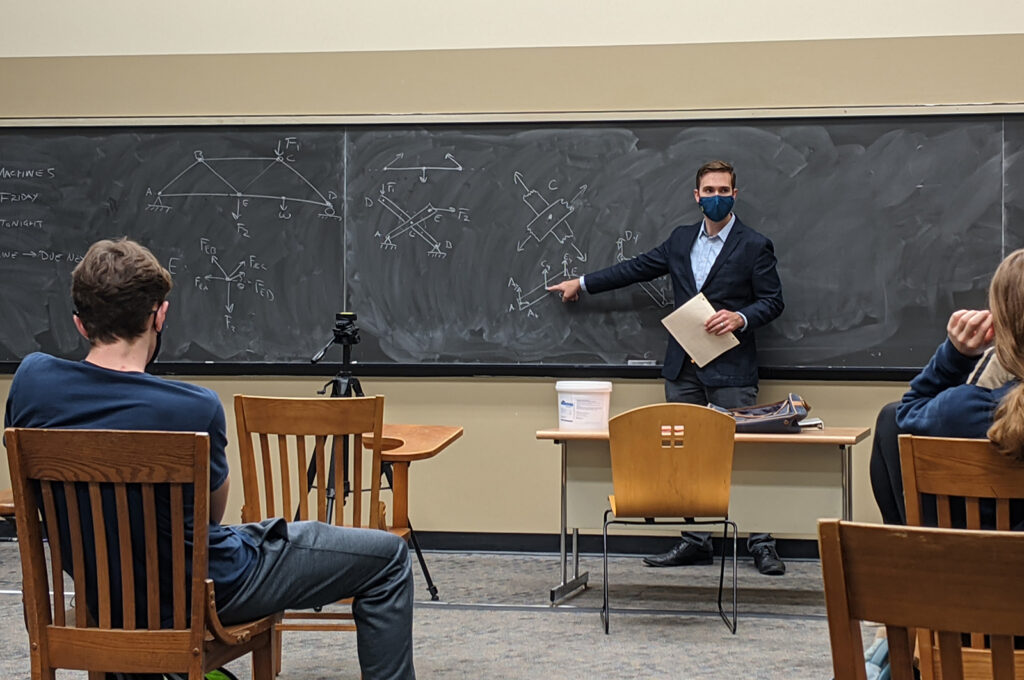
NANCY FLEMING (chair of the Nonexempt Staff Council and administrative assistant for the Departments of Engineering and Computer Science): Staff were faced with the challenge of how to do their job while not having access to their office or direct contact with their colleagues. Some had technical or hardware issues and some needed training to help transition processes to a digital world, but Trinity staff rose to this challenge with vigor. It was tough altering long-standing processes and keeping the lines of communication open, but the new communication tools helped significantly. And the biggest challenge of all was keeping a healthy sense of humor and maintaining good mental health.
DAVID TATEM (chair of the Exempt Staff Council and instructional technologist): The staff members all experienced a high level of stress in the fall, though our situations varied. Some people worked remotely out of spaces in their homes, whether an actual office or a corner in a bedroom, kitchen, or even a closet. The college was very supportive in making on-campus offices as safe as possible.
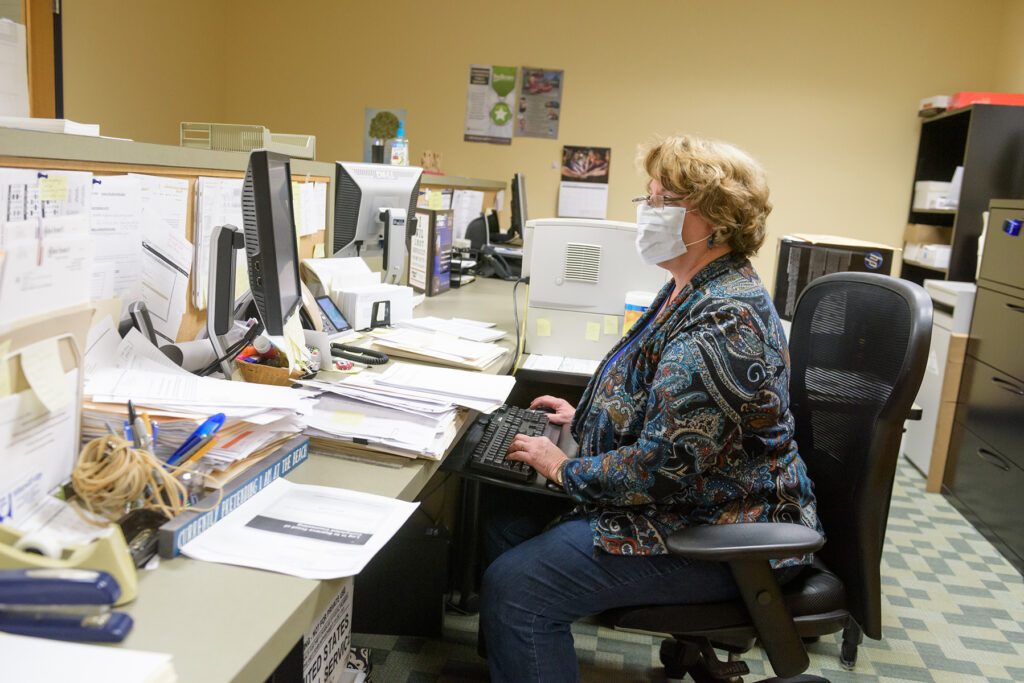
FLEMING: I think the staff has adapted quite well to this new electronic environment. Efficient digital processes were created to streamline paperwork, which saves some trees along the way. In some cases, we are communicating with each other more often and, thanks to Zoom, can do so “face to face.”
TATEM: Possibly the most important thing we learned is that we are all real people with lives that expand beyond what we encounter in the office day to day. I think we have all learned to be a bit more compassionate and understand the outside influences that may affect our work. Personally, I am looking forward to getting back into the office; I miss the spontaneity and variety of conversations that arise when working on campus and attending Common Hours and other events.
CABRAL: I’m so impressed with how the community has adapted. I think it’s a testament to the strength of the community before this pandemic happened. Members of the Athletics staff and others stepped in to run the testing center, and everybody just did what they needed to do. We are also seeing the creative ways people have learned to socialize. Employees miss coming to campus and they miss their coworkers, so the staff councils have held remote gatherings like Zoom happy hours and holiday parties—it’s been really amazing. This year has shown us that we can be creative and resourceful. HR will be doing focus groups with employees in February to talk about the remote work experience and we are starting to look at how we might incorporate remote work into the work plan beyond the pandemic.
Looking ahead to the spring 2021 semester:
DICHRISTINA: How we’re onboarding students for the spring semester is crucial. As in the fall, courses will again be offered as in-person, remote, or hybrid. The 13-week classes will begin remotely on February 8. Students start coming to campus February 18, and 10-week classes and in-person classes will begin on March 1. Students should quarantine before coming to campus, and must arrive with a negative test and then have three negative tests on campus before attending an in-person class. Until March 1, they can pick up grab-and-go meals from the dining hall and go to the testing center, but it’s essentially a quiet period so we can assess asymptomatic or symptomatic people who test positive and get them into isolation. Classes will have already begun remotely by then, which should help students adhere to that quiet period.
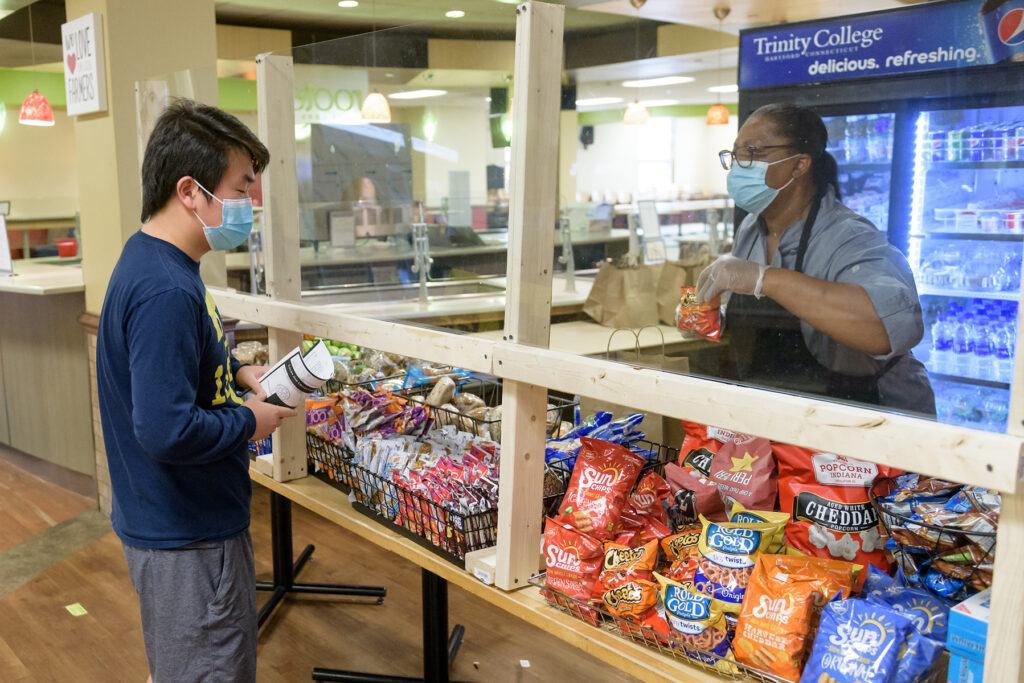
SCHAEFFER: As a result of what we learned and the great feedback we received, we’re looking to make a number of communications enhancements for the spring, some of which are already in place: adding a link to the COVID website to the top-level navigation menu of trincoll.edu; adding a regular COVID advisory to the Trinity Today email; improving the clarity of the COVID-19 dashboard and our campus alert level system; and increasing the frequency of updates to the COVID dashboard. We know this is a community that cares, so emphasizing care as a motivation for following health and safety protocols was and continues to be effective in terms of messaging.
O’BRIEN: The foresight that the college had last summer to change the academic calendar had a huge impact for the spring semester, since colleges that are currently repopulating are running into a lot of illness. In the spring, we will have an opportunity to use some rapid COVID-19 tests, which can give us a result in about 15 minutes. We will introduce that testing for people who are reporting symptoms and for people in quarantine, so they won’t have to wait a day for a test result and we can move positive cases into isolation faster.
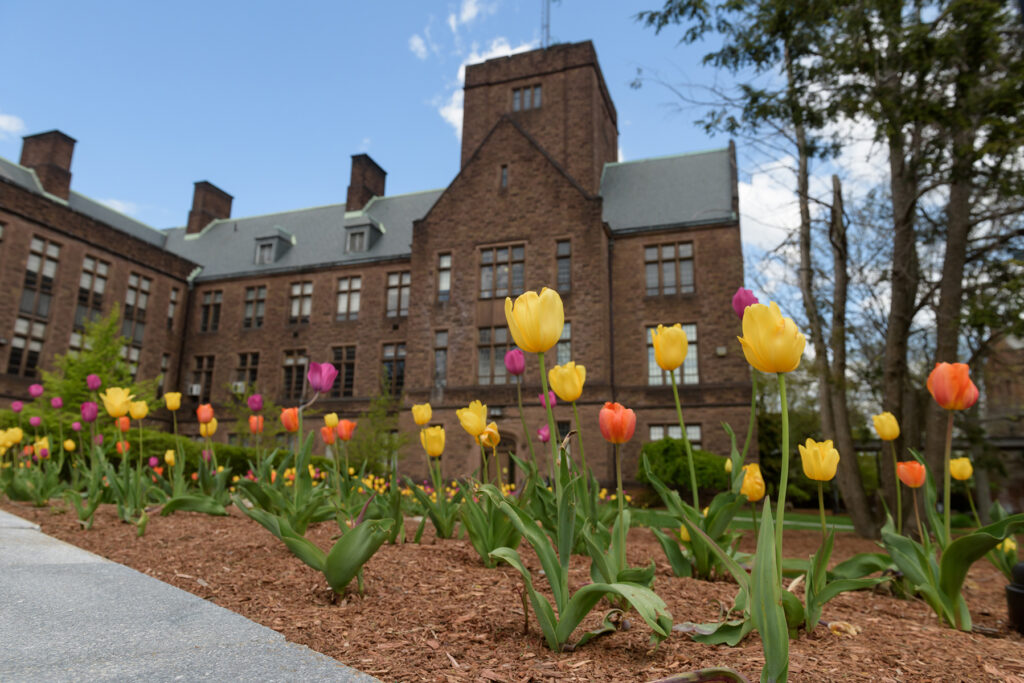 KASS: In the library, we’re doing a lot of scanning, making all reserves digital, shipping books, and offering zero-touch pickup. Library & Information Technology Services is now spending as much effort preparing for what the post-pandemic Trinity will look like as we are for the spring semester. We want to be sure the community has the tools they need to accomplish their jobs, from wherever they are. We believe as more people return to campus, they will continue to rely heavily on digital collaborative tools, such as Microsoft Teams, Virtual Computer Labs, Moodle, and Zoom. It is our plan to continue a focus on educating our community on how to effectively use digitally transformative tools, as well as supporting more mobile technology.
KASS: In the library, we’re doing a lot of scanning, making all reserves digital, shipping books, and offering zero-touch pickup. Library & Information Technology Services is now spending as much effort preparing for what the post-pandemic Trinity will look like as we are for the spring semester. We want to be sure the community has the tools they need to accomplish their jobs, from wherever they are. We believe as more people return to campus, they will continue to rely heavily on digital collaborative tools, such as Microsoft Teams, Virtual Computer Labs, Moodle, and Zoom. It is our plan to continue a focus on educating our community on how to effectively use digitally transformative tools, as well as supporting more mobile technology.
ROJAS: Looking ahead, we’re all concerned about the variations and mutations of COVID that make it even more contagious than it was in the fall. This is something we can respond to if everybody adheres to the testing protocols, wearing a mask, social distancing, and all the appropriate behaviors.
O’BRIEN: In Connecticut, it may be the end of February or mid-March before educators may become eligible to receive the vaccine. Because of our partnership with Hartford Healthcare, we are looking at every possibility to make that happen as soon as the state makes the vaccine available to our employees.
Visit the college’s COVID-19 website and the FAQs page for more information about returning to campus in February. Click here to read a letter to the campus community from Trinity’s COVID-19 steering committee about more lessons learned from the fall, detailed information about move-in (including pre-arrival requirements), and protocols for the spring.
